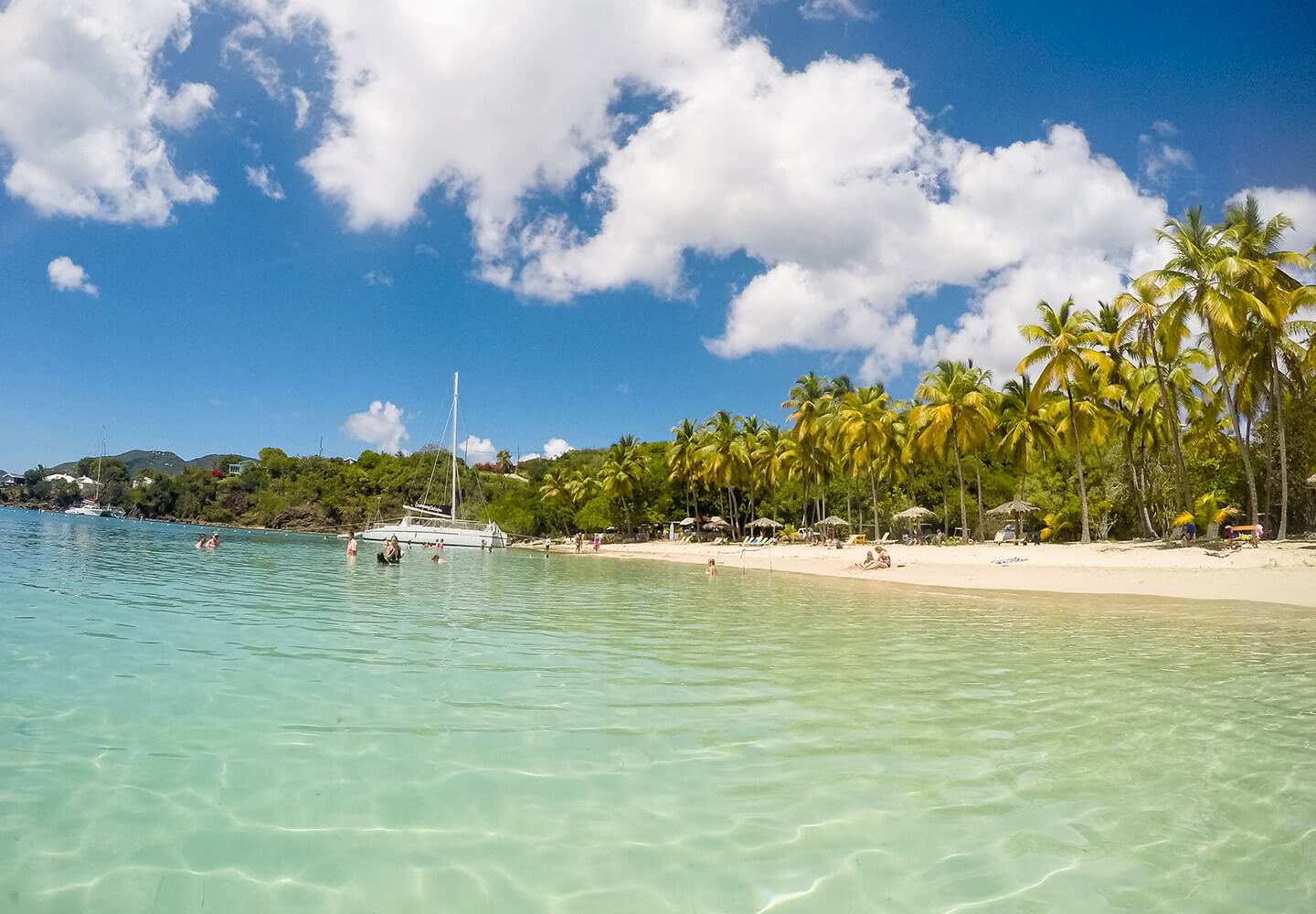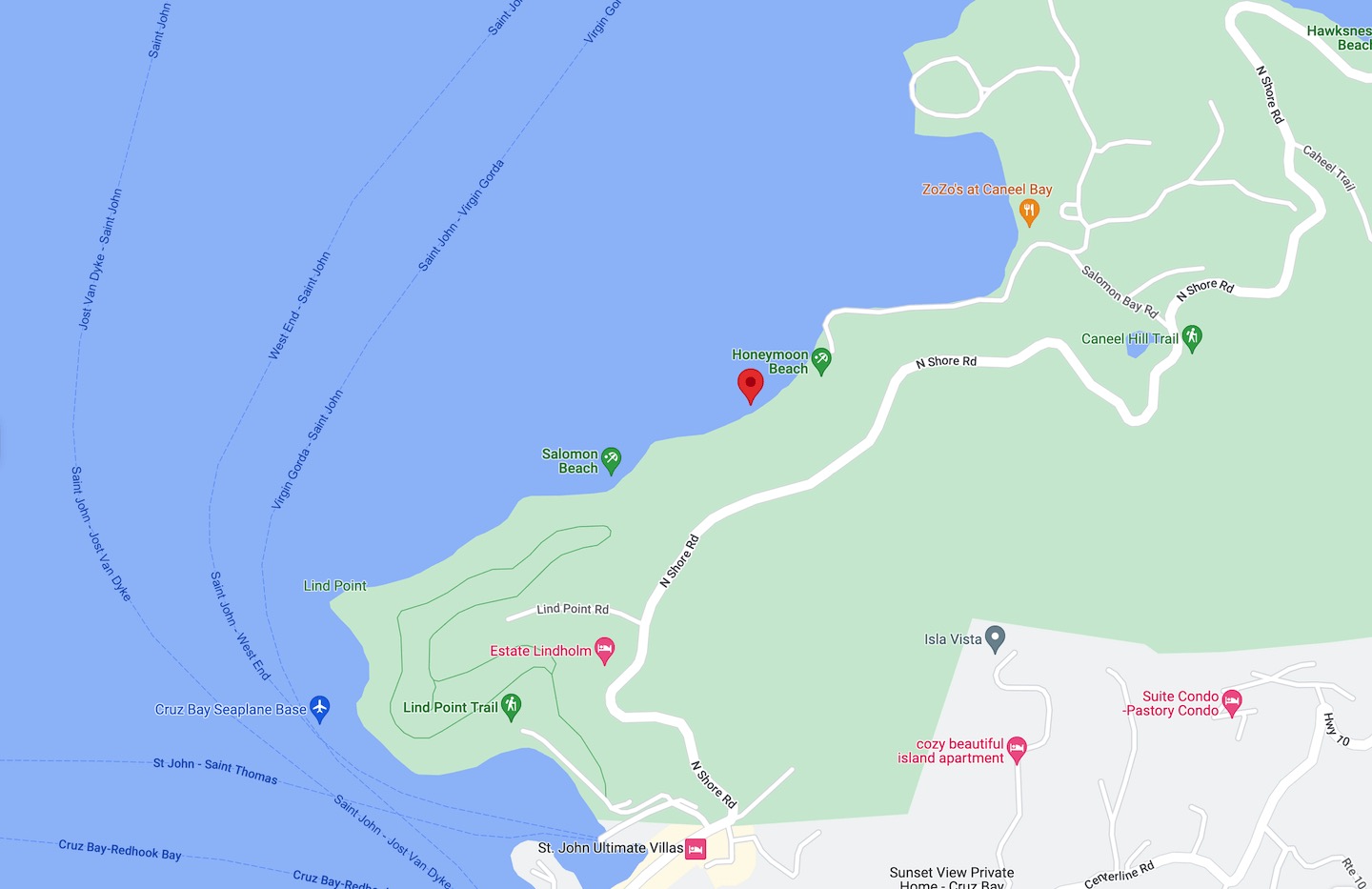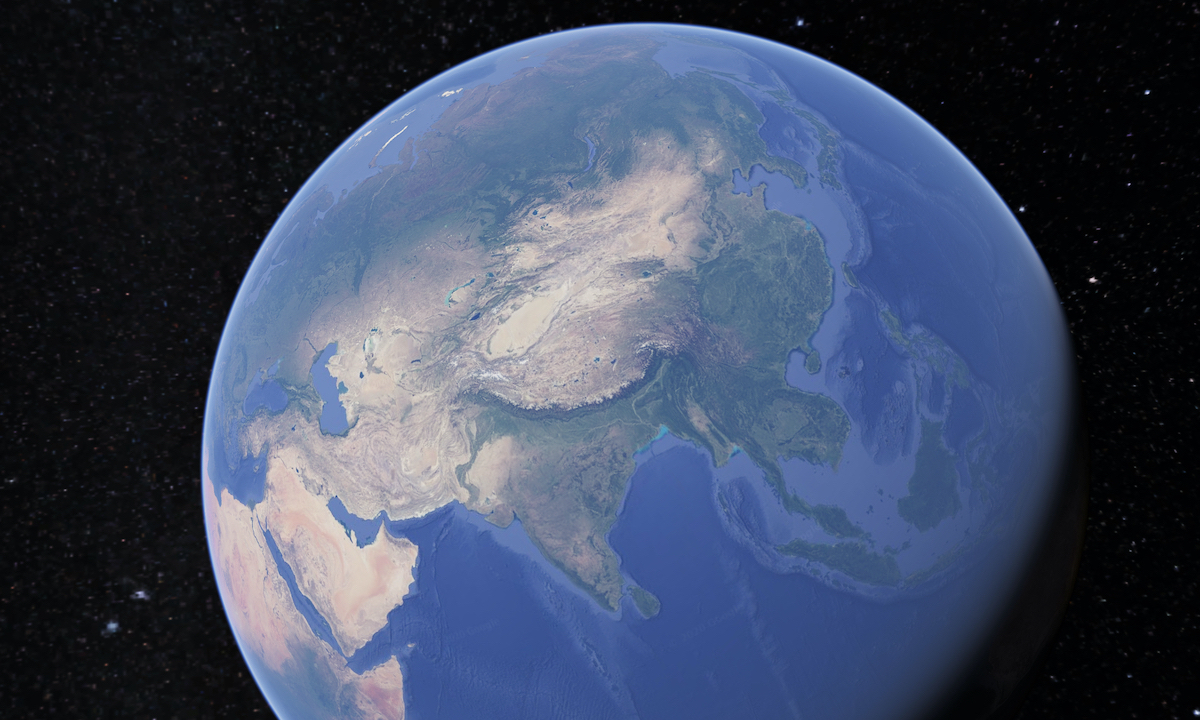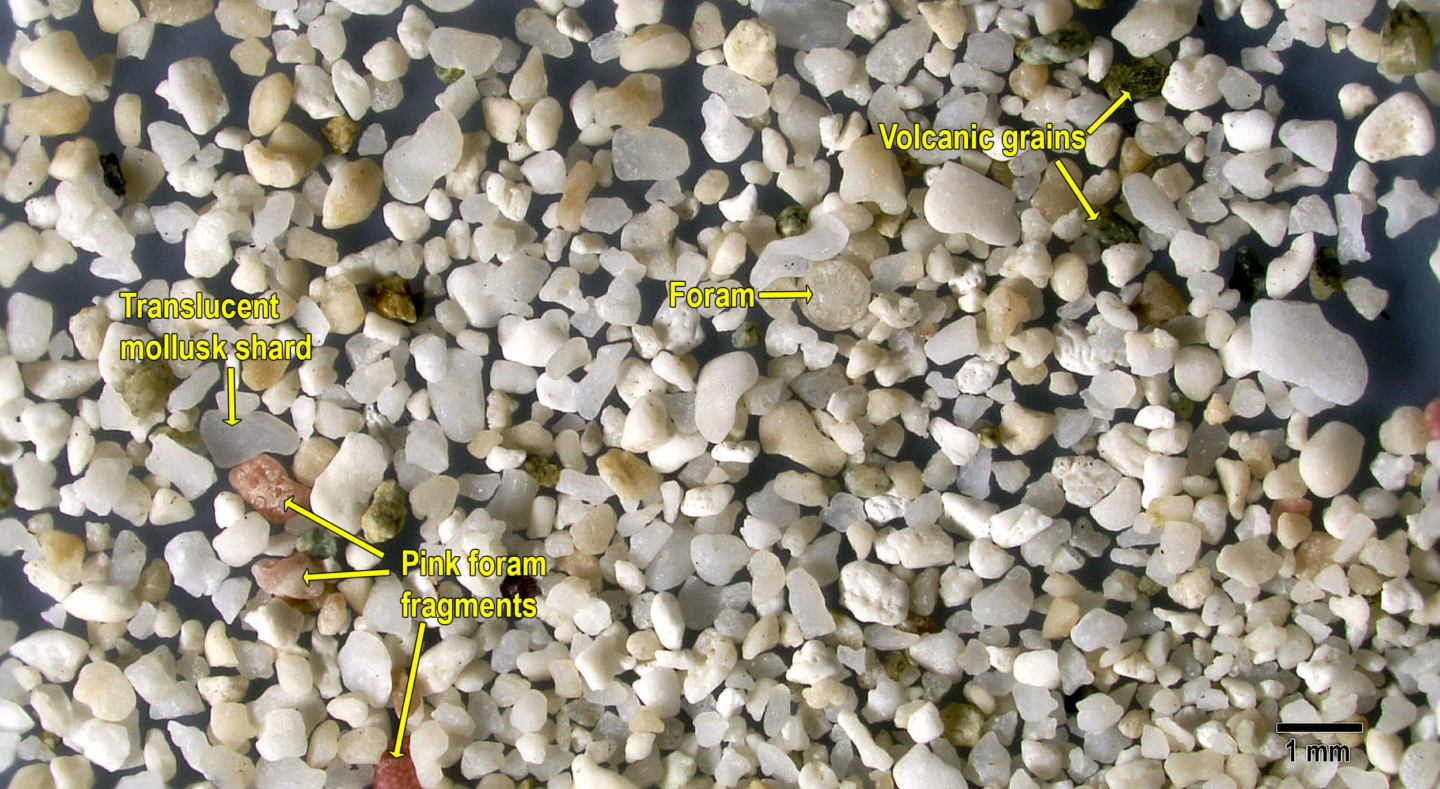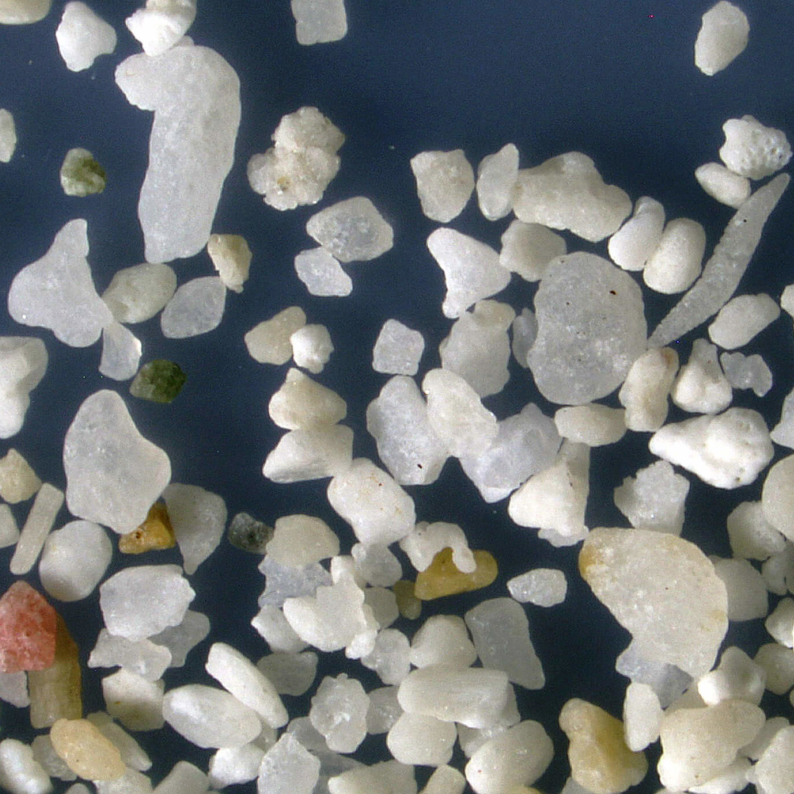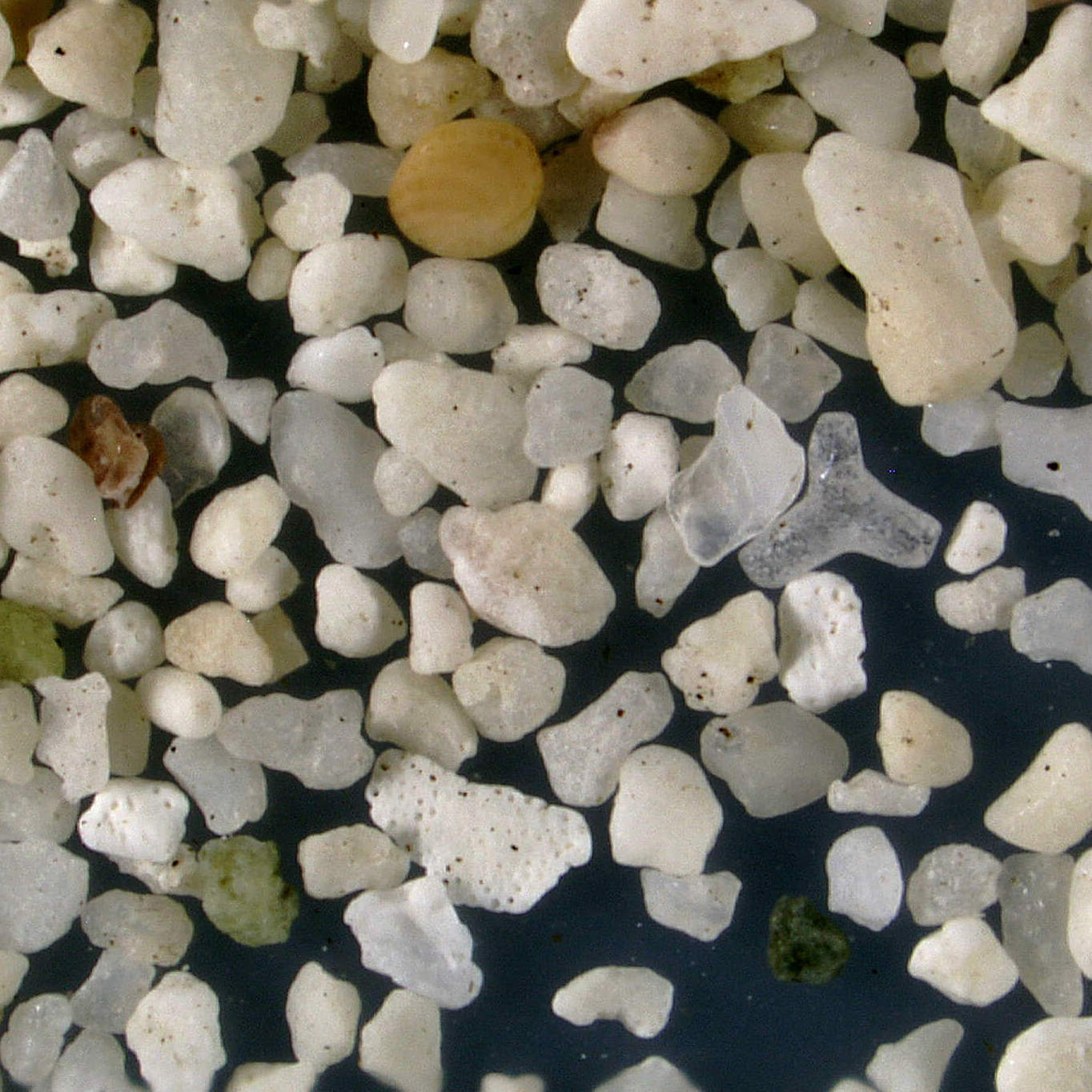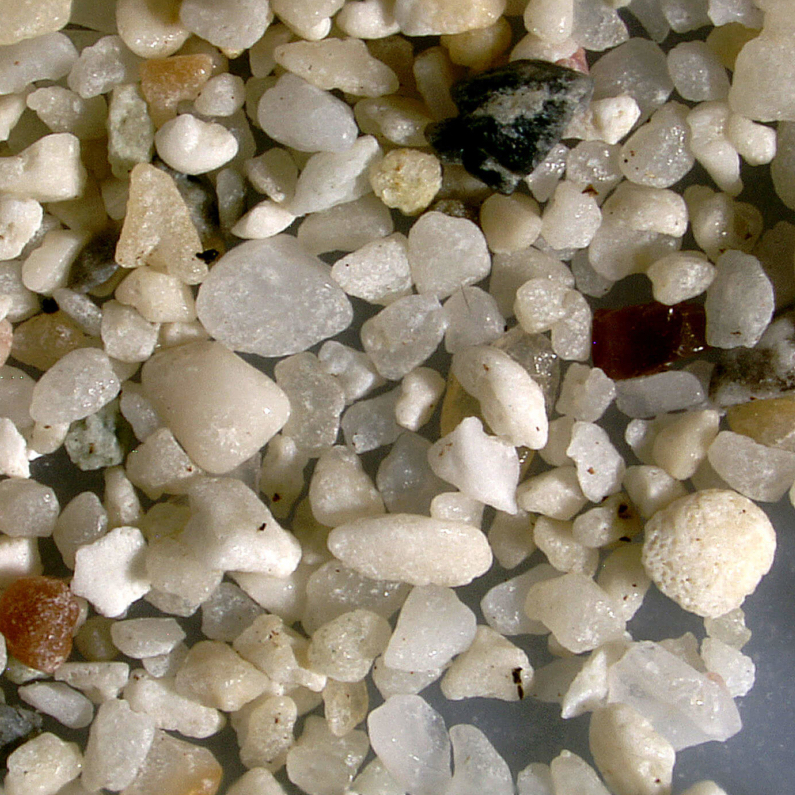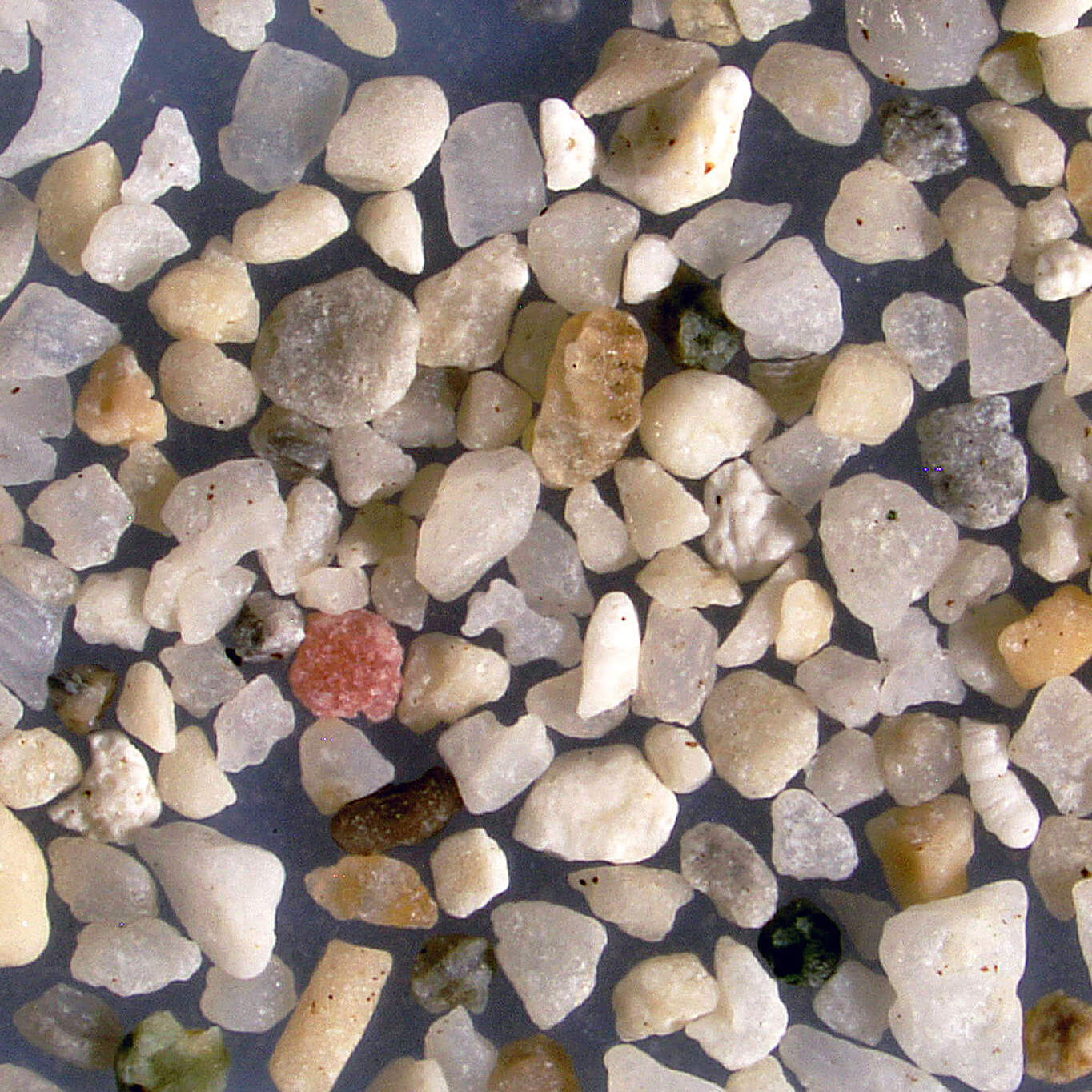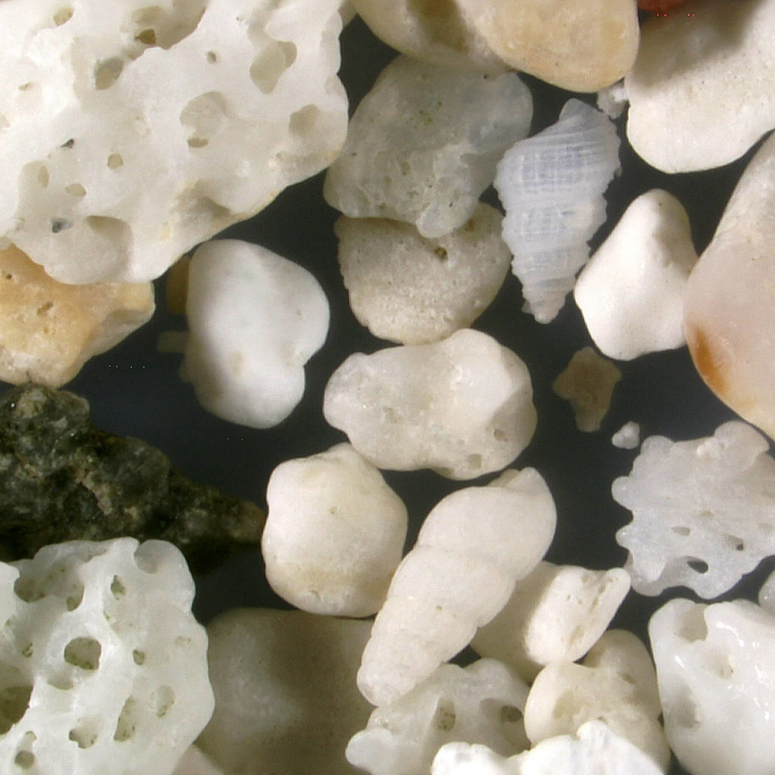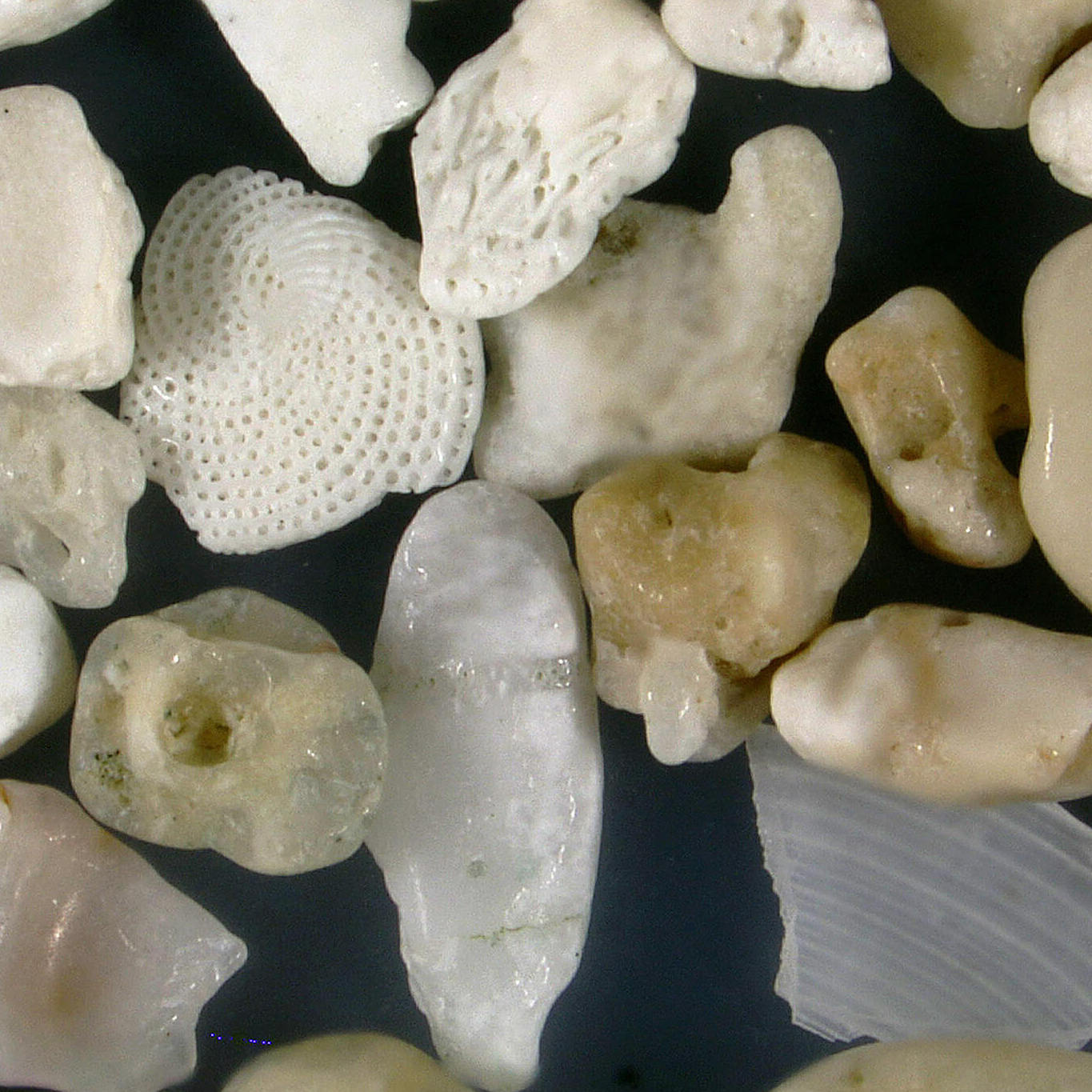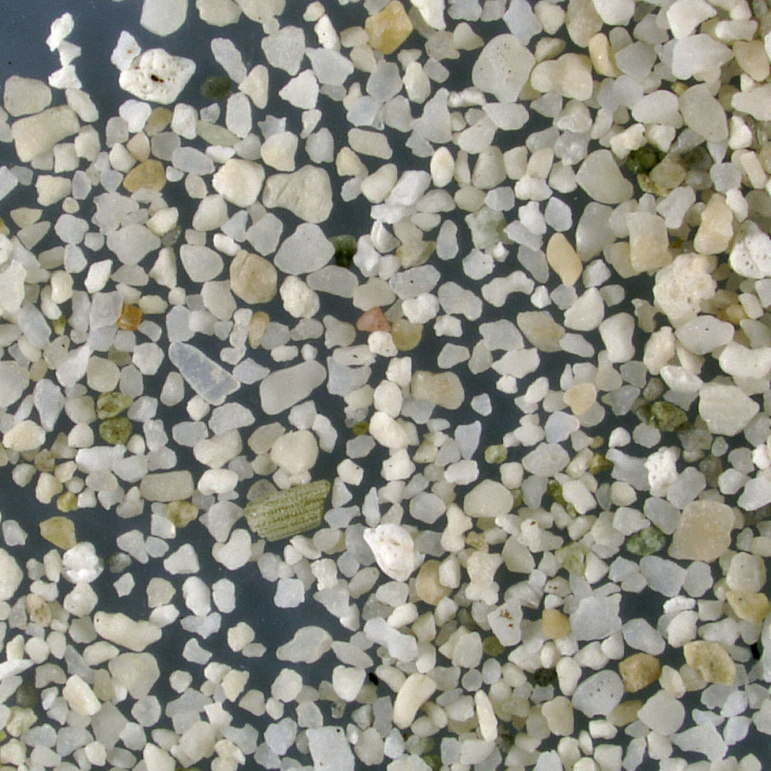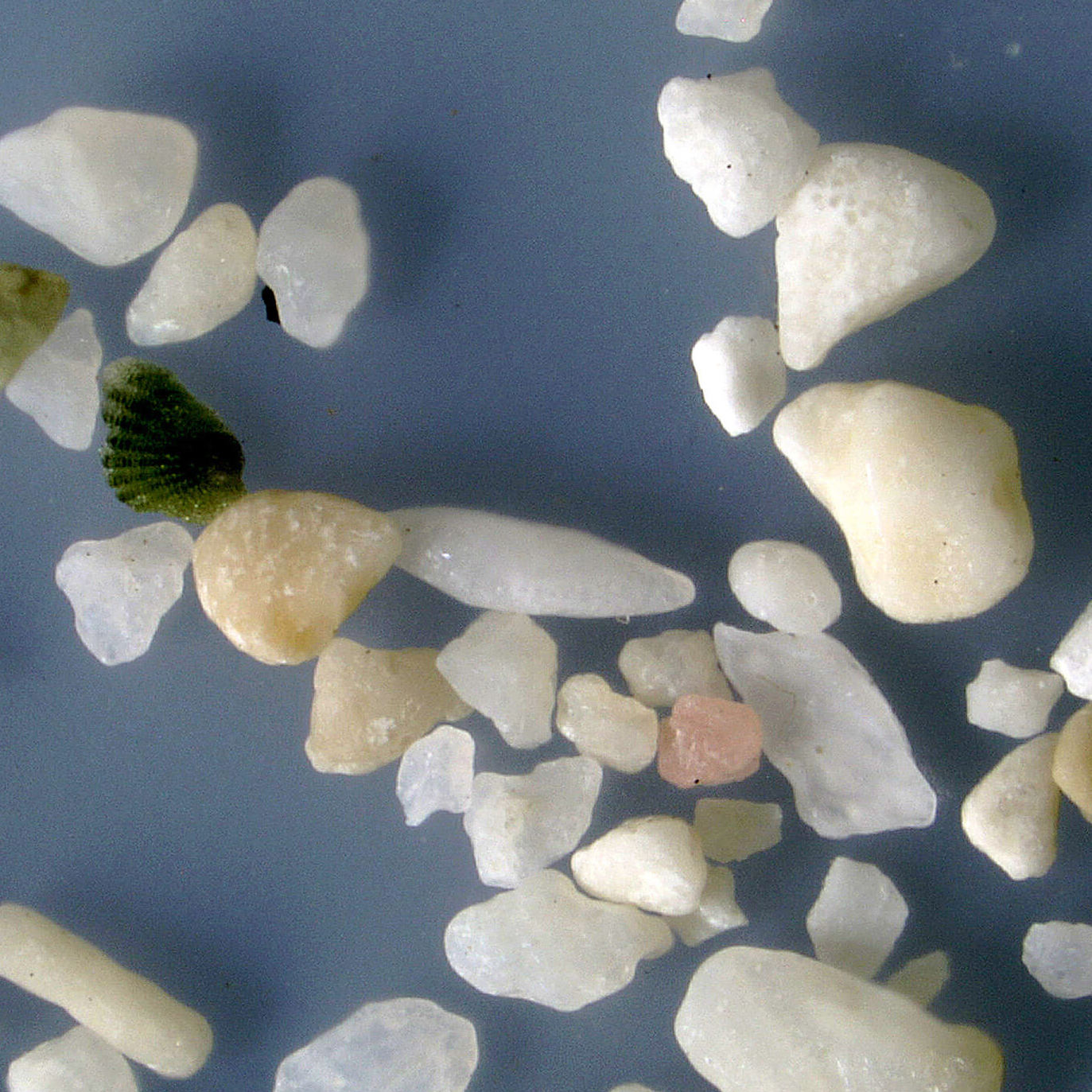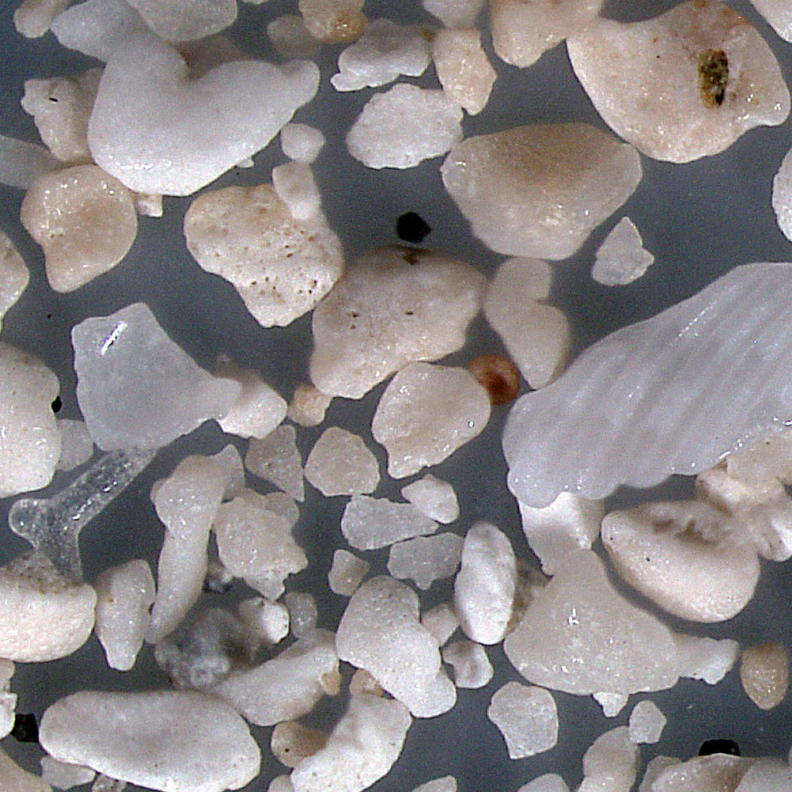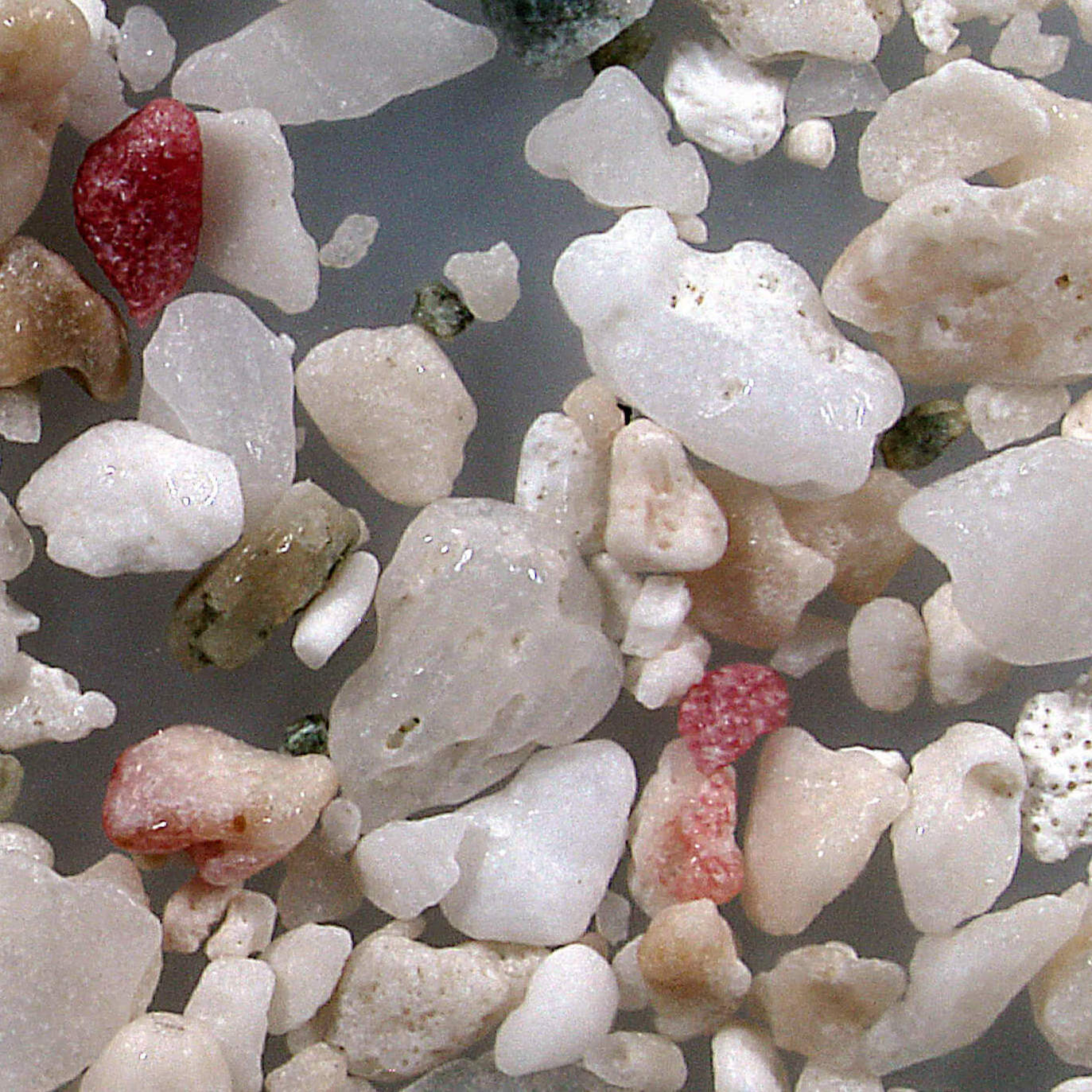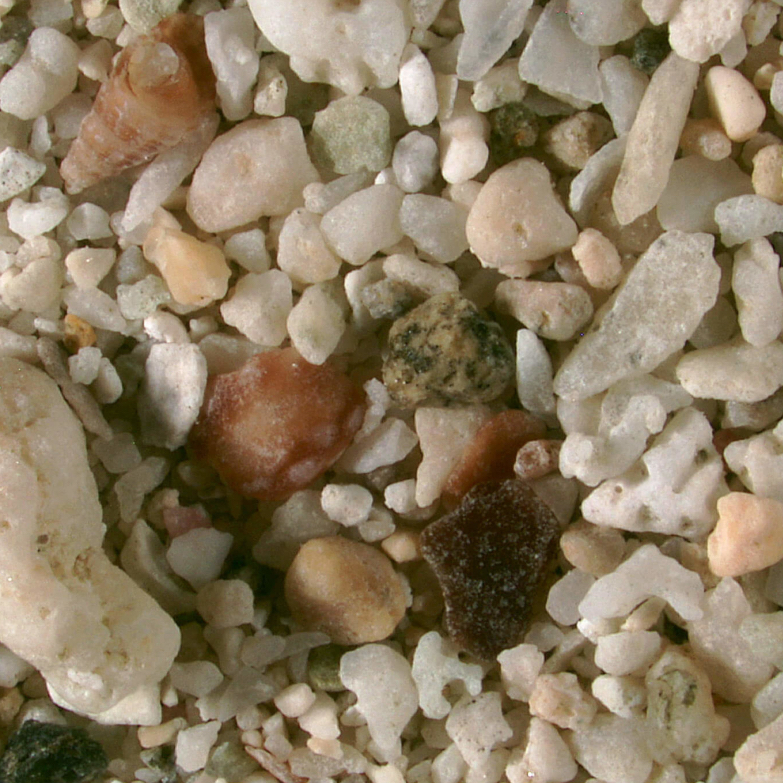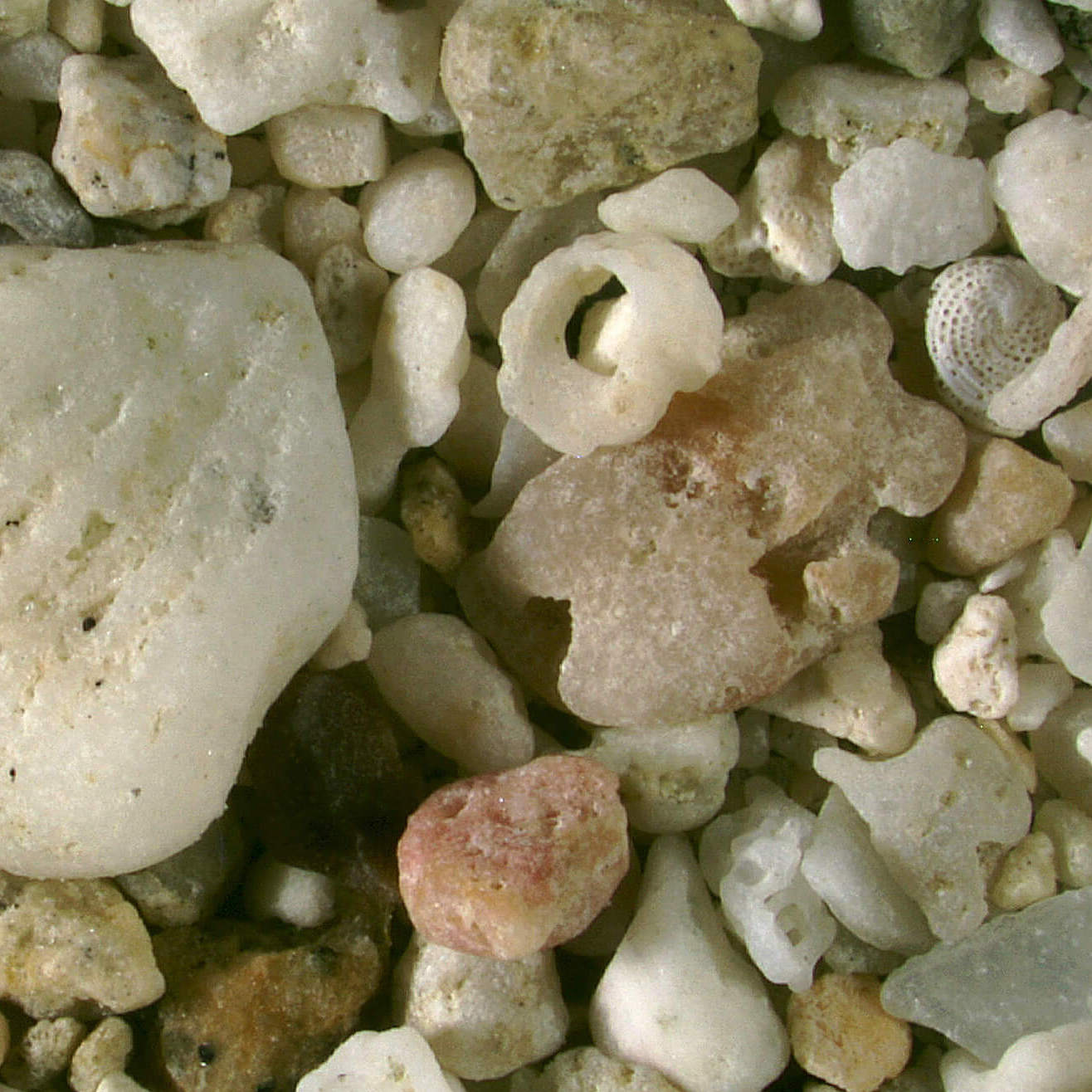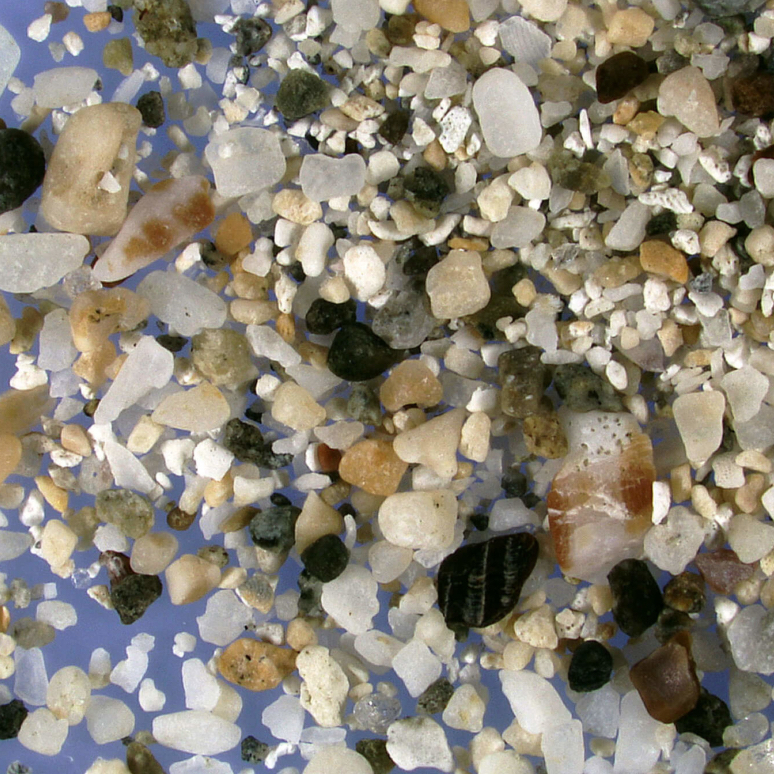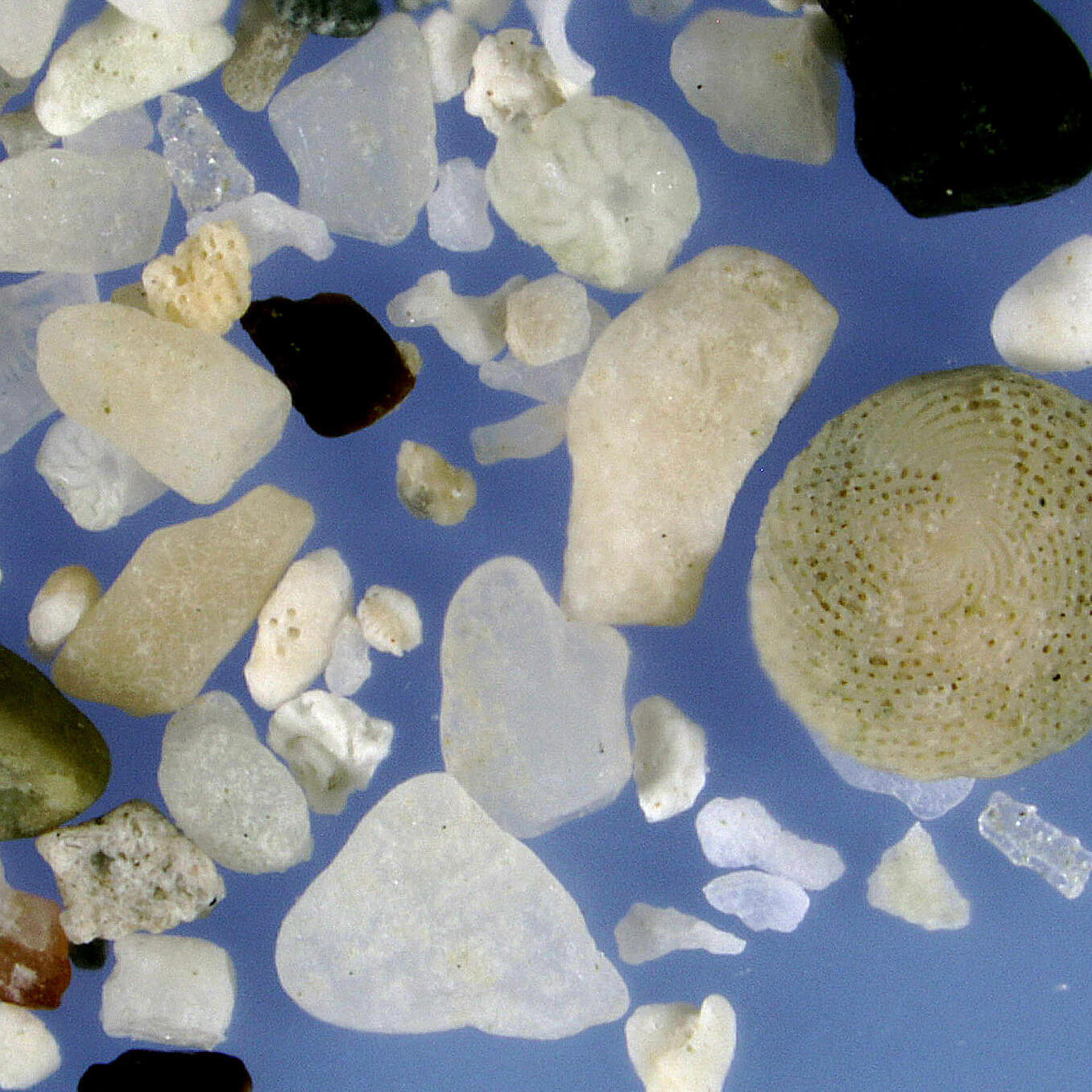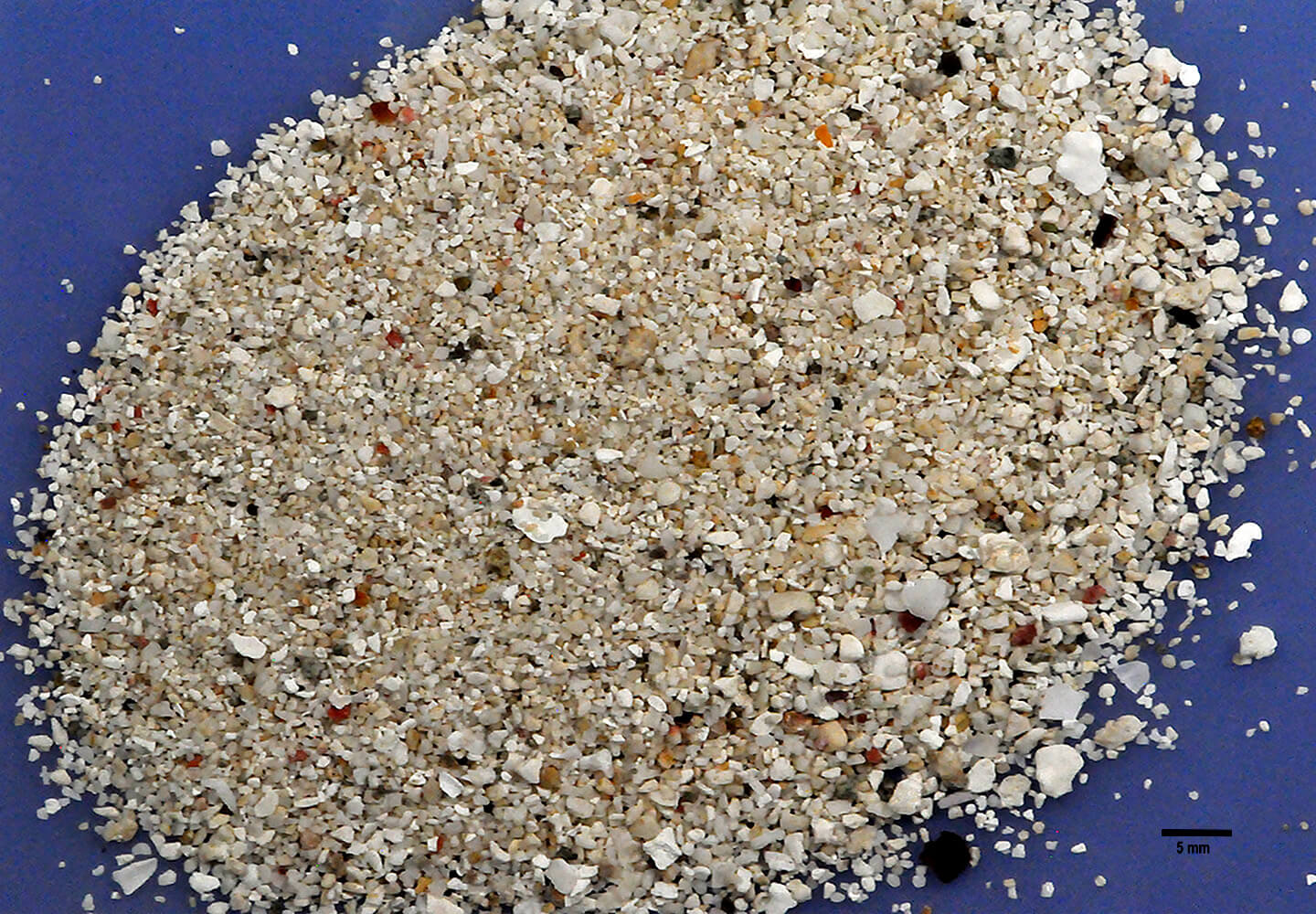
Although St. John is a volcanic island and part of a submarine mountain range extending from Cuba to Trinidad, sand on recreational beaches is primarily biogenic. Occasional black sand grains of volcanic origin are intermixed with a variety of white, tan, and reddish-brown grains of mollusks, white calcium carbonate skeletal remains of bleached coralline algae and other shell fragments.
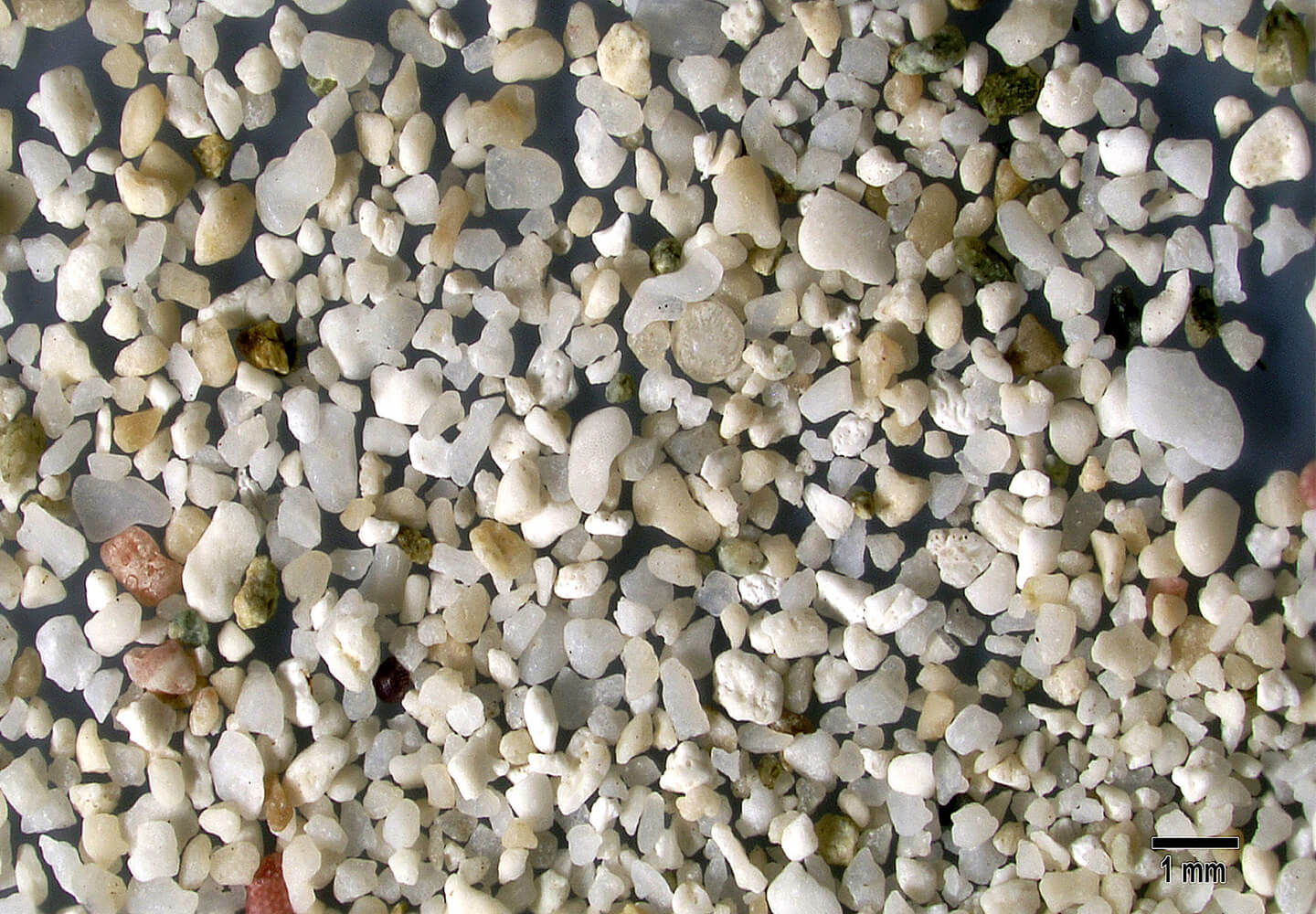
A sand mixture of calcified algae, coral fragments, bits of mollusk shells, and pale and red forams reflects the diversity of adjacent sea life surrounding this island. Most of these sand grains have been smoothly worn by wave action. Occasional dark greenish-black grains are likely of volcanic origin. This sample was collected in 2007.
Geographic Overview
Only 9 miles long and 2 miles wide, St. John boasts of lush emerald mountains, hills and valleys without many flat areas, and soft white coral sands on numerous near-deserted tranquil beaches. The coast has coral reefs full of sea life with coastal areas characterized by many protected bays. Approximately 60% of the island is the protected Virgin Islands National Park, administered by the United States National Park Service.
Sand Gallery
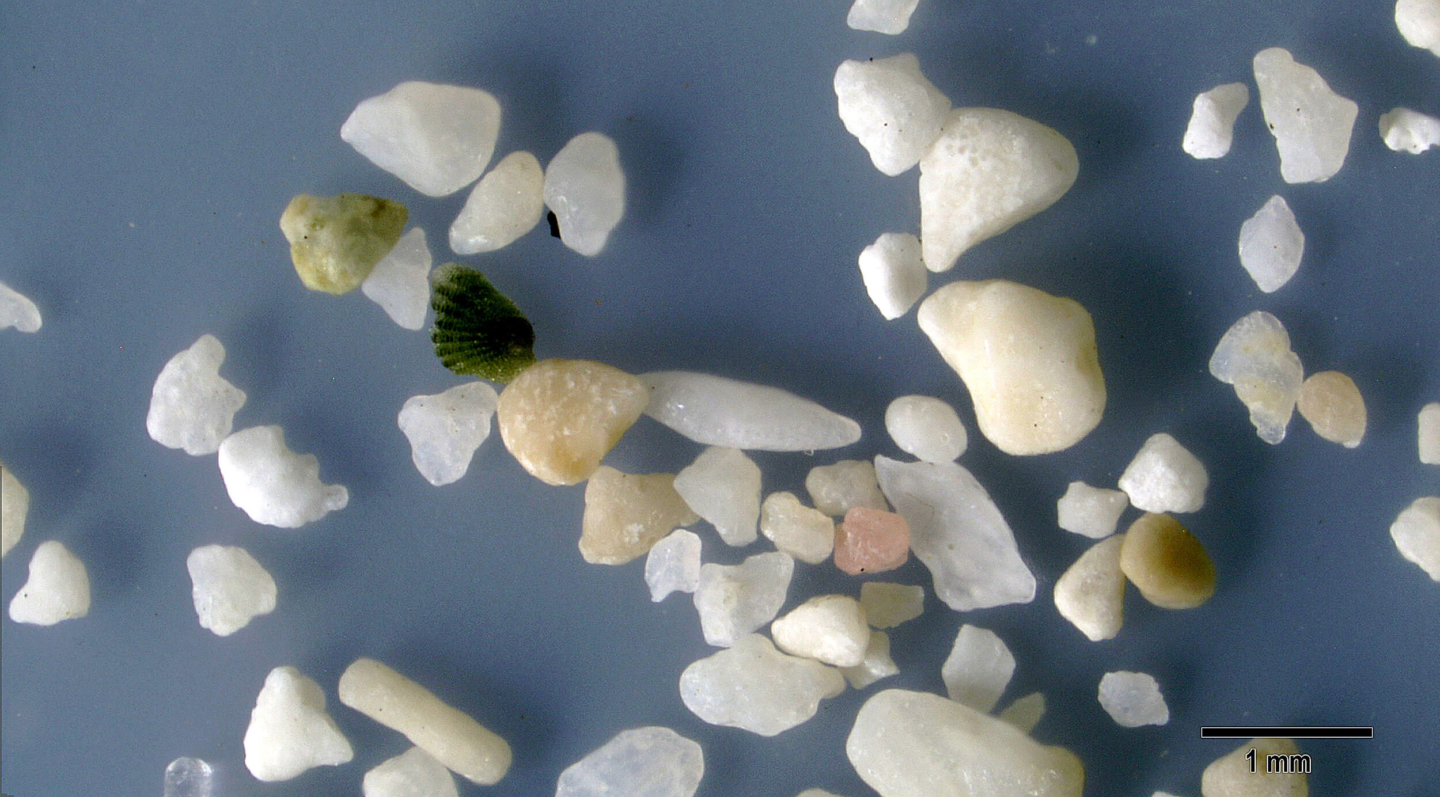
In the center of this high magnification the elongated structure with tapered ends is an octocoral spicule. A dark greenish-black shell fragment of a mollusk is at the upper left of center and the off-white rod at the bottom left is a piece of calcareous algae. This sample was collected in 2007.
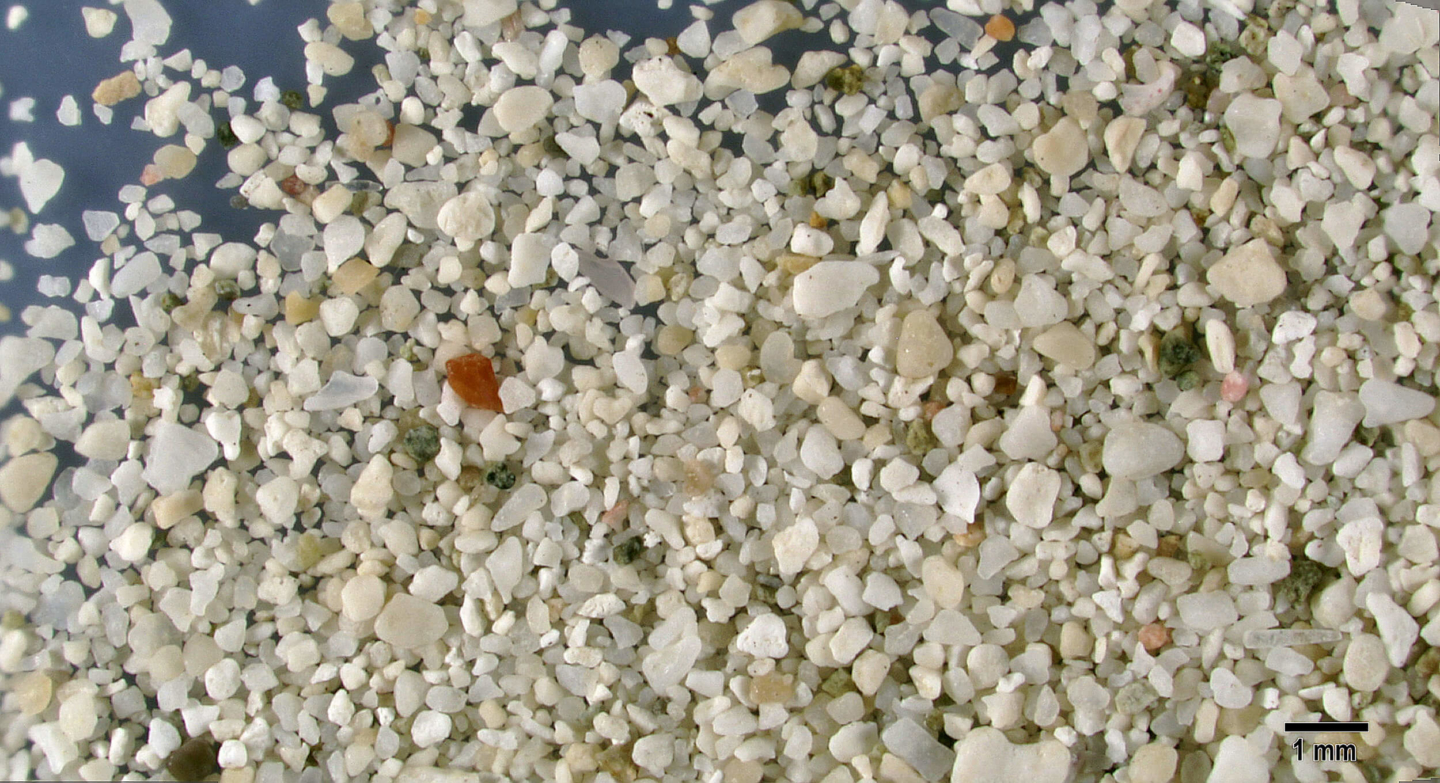
This low magnification view shows a mixture of translucent, white and off-white sand grains of marine origin with occasional greenish black grains of volcanic origin. Most sand grains are smoothly worn down from years of wave action. This sample was collected in 2021.
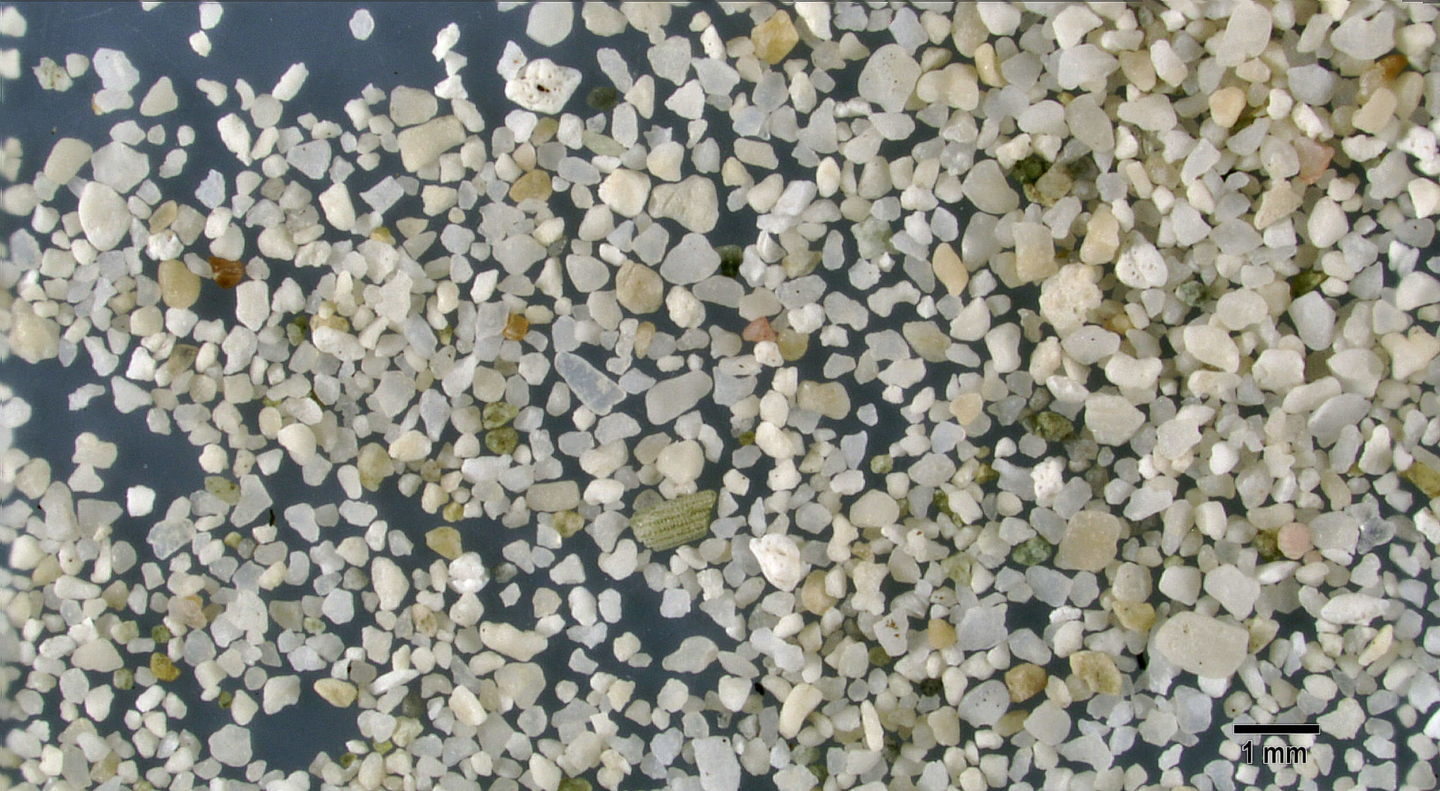
This mixture of moderately worn white, off-white and translucent sand grains includes fragments of marine organisms including corals, bivalve microshards, and pieces of calcareous algae. A light greenish fragment with parallel linear markings near the center is a piece of sea urchin spine. This sample was collected in 2021.
A sand mixture of calcified algae, coral fragments, bits of mollusk shells (translucent mollusk shard), and pale and red forams (pink foram fragments) reflects the diversity of adjacent sea life surrounding this island. Most of these sand grains have been smoothly worn by wave action. Occasional dark greenish-black grains are likely of volcanic origin (volcanic grains). This sample was collected in 2007.
